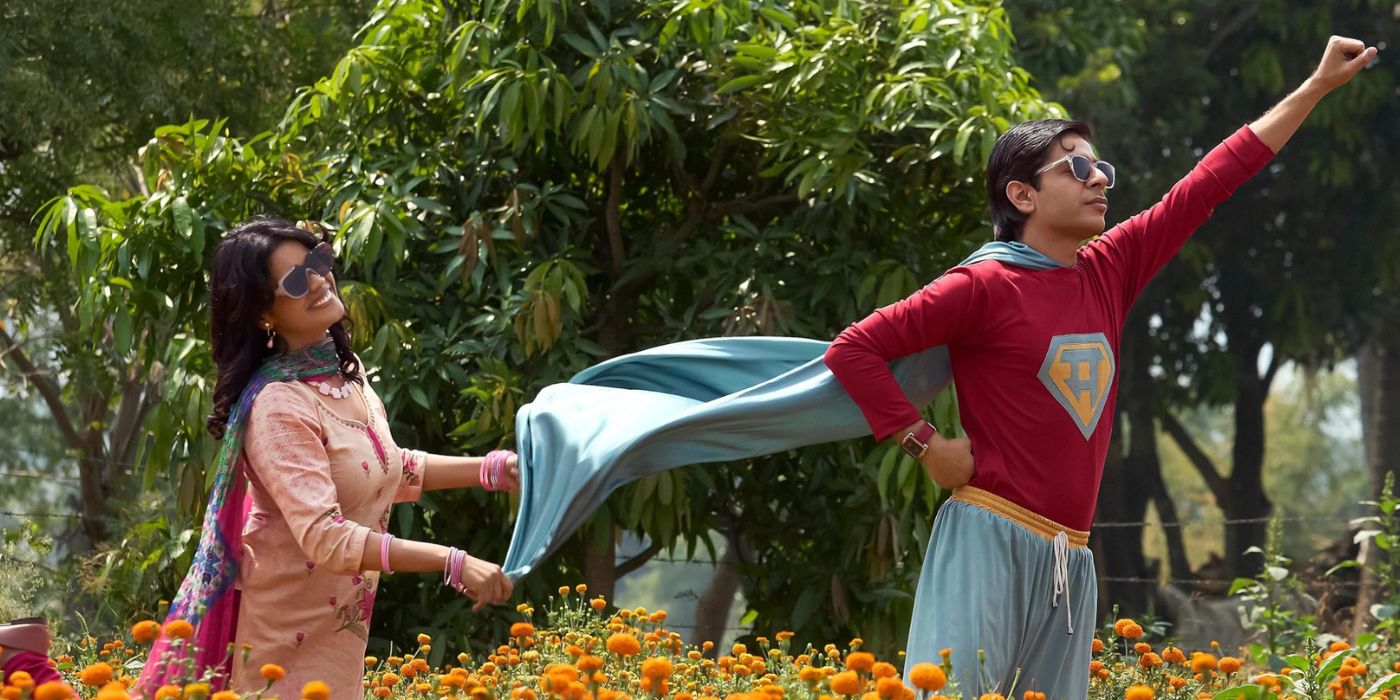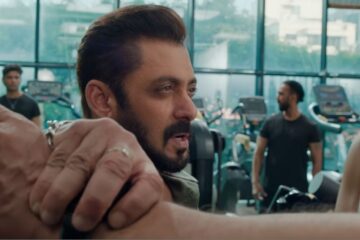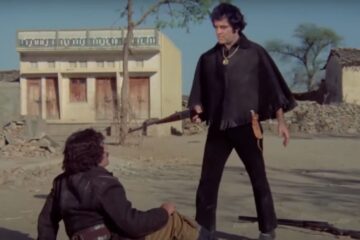Superboys of Malegaon proves that once you leap wholeheartedly toward your dream, the universe rises up to meet you halfway.
What does Shahrukh Khan and a movie about amateur filmmakers have in common? We’re glad you asked.
It starts with a dream..
There’s a dialogue in Om Shanti Om where Shahrukh Khan says:
“Kehte hain agar kisi cheez ko dil se chaho … to puri kainaat usse tumse milane ki koshish mein lag jaati hai.”
While Om Shanti Om didn’t really do it for us personally — to each their own and it did introduce us to Deepikia Padukone, who won us over with her roles in gems like Piku and Tamasha — this line truly hit home. If you’ve ever wanted something—really, wholeheartedly—and see no clear path to it, just give it your best shot and trust the rest to sort itself out. The universe has a funny way of aligning with genuine passion.
Dont’ believe us? Do yourself a favor and watch Superboys of Malegaon to convince yourself and to get that warm fuzzy feeling that will reinforce what King Khan said about dreams and fate.
Because that’s exactly what happened with Malegaon’s own Nasir Sheikh. His story was one that gets repeated millions of times; he was an ordinary man with an extraordinary dream: to make spoofs of Bollywood hits in a town as far removed from Tinseltown as pav bhaji is from pizza. The only catch in this being just another pipe dream? Nasir wasn’t willing to let it go. Working on a shoestring budget with a merry band of amateur actors might sound impossible. But the only thing that divides reality from fantasy is the execution.
Superboys of Malegaon, directed by Reema Kagti and written by Varun Grover, gives us a front-row seat to Nasir Shiekh’s fever dream, proving how real (and delightfully messy) the journey can be.
From Grainy Home Videos to Festival Spotlights
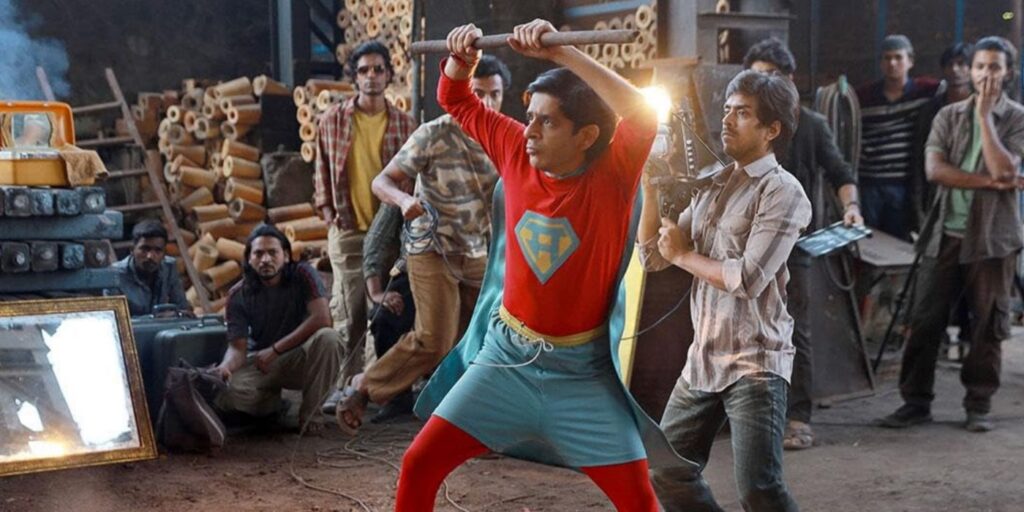
Like every inspiring tale, Nasir’s story starts well before any red-carpet moments. He was just another kid working in his family’s “video parlor” in Malegaon, an industrial city that hardly seemed a breeding ground for starry-eyed filmmakers. But much like the spirit of Be Kind Rewind, a local circle of movie buffs thought, “Why not make our own blockbusters?”
Kicking off with spoofs of mega-hits like Sholay, Nasir and his team wowed hometown audiences through their do-it-yourself audacity. Then came the notion of “Mollywood,” a hyperlocal spin on India’s biggest blockbusters that reflected the grit and charm of a working-class enclave. Armed with a VHS camera, secondhand costumes, and unwavering camaraderie, Nasir’s resourceful parodies rivaled the creativity of any mainstream crew.
When Real Life Met Reel Life

His raw determination led to a 2008 documentary (Supermen of Malegaon) that captured the hearts of festival-goers in Mumbai and beyond. That’s where Kagti, Zoya Akhtar (Zindagi na milegy dobara), and Grover stepped in. Sensing more than a few slapstick gags, they uncovered a human narrative rich with dreams, obstacles, and a “why not?” spirit.
Fast-forward to Superboys of Malegaon: a fictional retelling that folds Nasir’s comedic escapades into the tougher realities of censorship, evolving technology, and real heartbreak. In many ways, it’s reminiscent of The Fabelmans, where a fictional younger version of Spielberg dabbles with toy trains and home video illusions, revealing just how cinema can soothe personal pain—or force you to face it.
From Video Parlors to Festival Premieres

Reema and company wanted to explore the person behind the spoofs: a man pitching comedic ideas to brighten an industrial town yet battling bureaucratic hurdles and family commitments while the digital era loomed. Research revealed fresh layers, like how local writer Farogh joined as a script collaborator or how an uptick in Nasir’s success led authorities to demand censor certificates at every turn. Each challenge underscored the unwavering engine driving these homemade productions: Nasir’s commitment to entertaining people, no matter what.
For Kagti, that raw fervor rekindled her own spark. “Nasir made movies purely for the love of it,” she observed. “Seeing that kind of unfiltered passion reminded me why I became a filmmaker in the first place.” When Superboys of Malegaon finally premiered (the team even made it to TIFF 2024), its central message rang out loud and clear — cinema can sprout in the unlikeliest places if the burning desire is real.
Also Read: 12 Bollywood Remakes of Famous Pakistani Films
Nasir Shaikh: The Man Behind the Camera
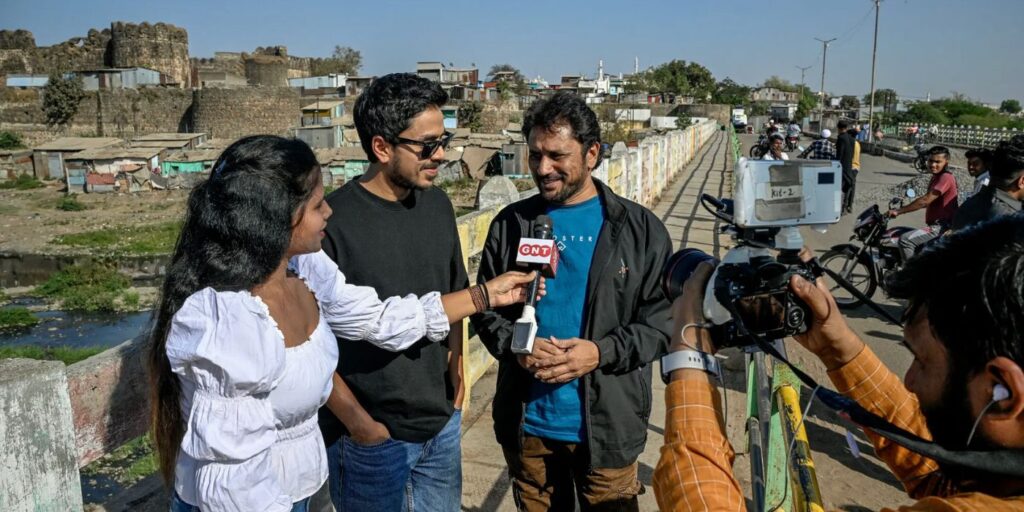
People gravitate towards stories of perseverence and success because let’s face it, we’re all suckers for feel-good cinema. At its core, Superboys of Malegaon tells the story of Nasir Shaikh, the everyday movie-lover whose laser-focused devotion to film elevated him to a sort of folk hero.
It’s the same against-all-odds tale told time and time again. We come to the movie giving us a semi-biographical peek into Spielberg’s determination. If The Fabelmans gives us Sammy Fabelman staging toy train crashes in his living room, then Nasir is the local answer—piecing together Buster Keaton’s comedic timing with Jackie Chan’s martial arts flair, enlisting mill workers and waiters as action stars. Maybe call it “Mollywood,” but the principle is the same: with a cheap camera, minimal funds, and a dash of madness, you can build entire worlds.
Like Spielberg’s fictional stand-in, Nasir discovered that real life can slam into your creative ambition. Public officials demand screening approvals, money dries up, and family needs intrude at the worst times. Still, the sheer love of filmmaking wins out. It’s quite meta, too, seeing Nasir — once scouring thrift stores for props — become a muse for major producers. Adarsh Gourav, who portrays him, recalls strolling around Malegaon with the very man he was channeling on screen. “He’d pause to fix his hair with his phone camera,” Gourav says, “like someone forever framing his next shot.”
A Legacy on Screen and Off
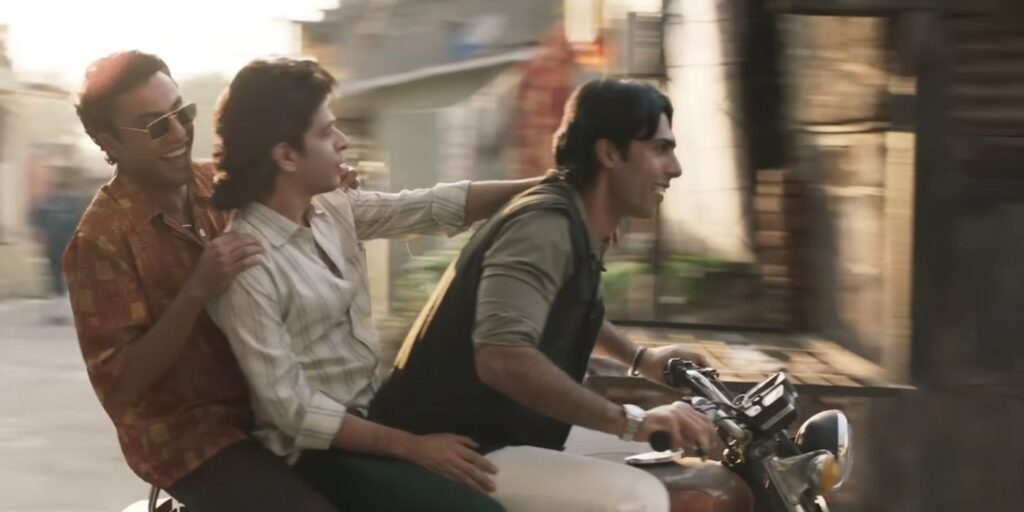
Some of Malegaon’s old video parlors still flicker with second-run hits and classic re-releases. Yet the city’s defining claim to fame remains the scrappy comedic flicks that launched Nasir’s legend: retooling familiar Bollywood tropes for local audiences. Superboys of Malegaon captures that legacy and crowns Nasir among the unstoppable dreamers who wouldn’t let circumstance stand in the way of creative glee.
Just as The Fabelmans spotlights a suburban boy armed with an 8mm camera, so does Nasir’s fable celebrate the ingenuity a simple environment can inspire. As Varun Grover puts it, these individuals refused to leave their dreams in the dark. And that’s the real crossover between Superboys of Malegaon and Spielberg’s nostalgic reflection: pure, undiluted love of cinema, propelling an inspired mind to rewrite the script of its own life.
Proof That the Universe Listens
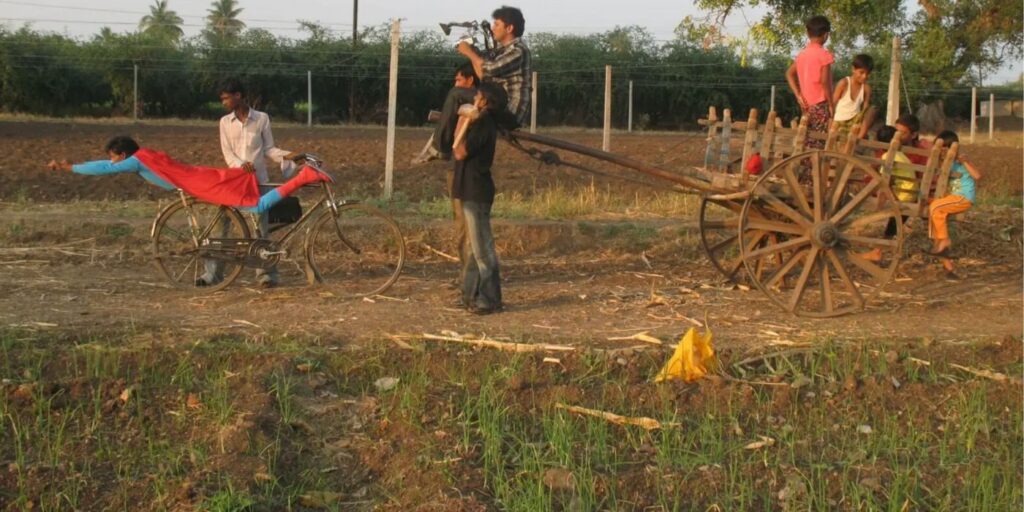
Strip away the film’s dramatic embellishments, and you’re left with a simple premise: Nasir wanted to make people laugh, so he did whatever it took—from tying a “Superman” horizontally to a wagon to hanging a tattered bedsheet for a green-screen sky. Soon enough, bigger filmmakers took notice, bringing us a festival-worthy biopic that immortalized his indomitable spirit. Call it fate, coincidence, or just the unstoppable force of a dream well pursued—Superboys of Malegaon reminds us that if you truly believe in your vision and jump in with both feet, the universe has a remarkable habit of meeting you halfway.
So, here’s what you should take from Superboys of Malegaon: if you’ve tried to achieve what you’ve always wanted and not gotten it, don’t give up. It’s not over yet. Or as the King Khan would say:

